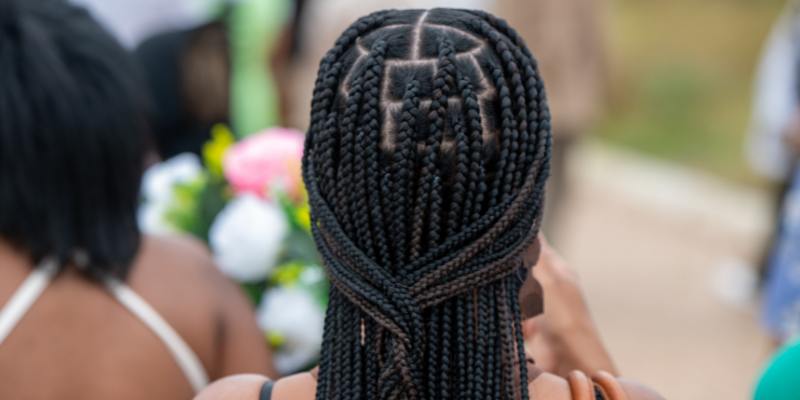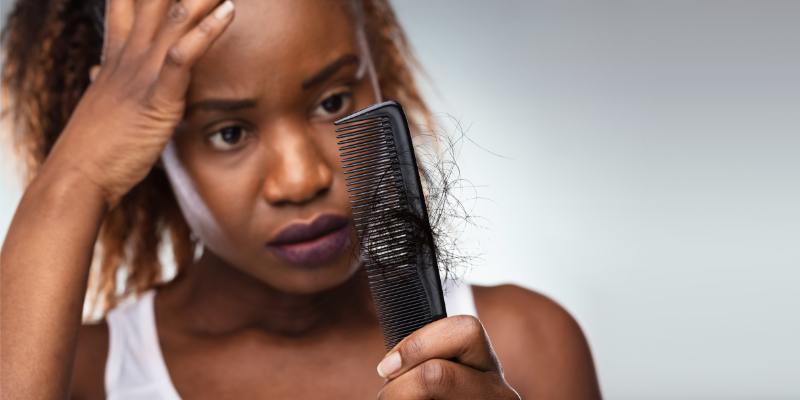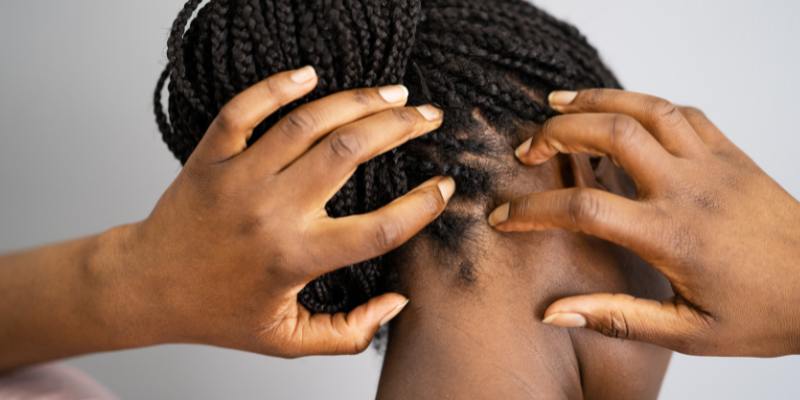We all love a good hairstyle.
It can boost confidence, express our creativity, and even frame our faces flatteringly.
But some hairstyles, while undeniably stylish, can come with a hidden cost: hair loss.
This hair loss is called traction alopecia, and it's more common than you might think.

What is Traction Alopecia?
Traction alopecia is a type of hair loss caused by constant pulling or tension on the hair follicles.
This pulling can happen over time with certain hairstyles that strain the scalp, like tight ponytails, braids, cornrows, dreadlocks, or even hair extensions.
How Does Traction Alopecia Happen?
Imagine your hair follicles as tiny anchors holding your hair strands in place.
When hairstyles put too much tension on your hair, these anchors are constantly stressed.
Over time, this stress can weaken the follicles, leading to breakage, shedding, and eventually, hair loss.
Signs of Traction Alopecia
Here are some signs that your hairstyle might be causing traction alopecia:
- Hair loss around the hairline: This area is commonly affected, especially with tight ponytails or braids.
- Receding hairline: In some cases, traction alopecia can mimic male or female pattern baldness.
- Redness, itching, or irritation on the scalp: This can be a sign of inflammation caused by the pulling.
- Small bumps or pimples around the base of the hair follicles: This can be a sign of infection due to damage from tight hairstyles.
- Widening of the part line: As hair thins around the part, the part itself may appear wider.

Protecting Your Hair: Alternatives and Prevention Tips
The good news is that traction alopecia is often preventable.
Here's what you can do:
- Loosen Up: Opt for looser hairstyles that don't pull on your scalp. Experiment with braids or less tight buns, or try wearing your hair down more often.
- Take Breaks: Don't wear the same tight hairstyle for extended periods. Switch things up and let your hair loose to give your scalp a chance to breathe.
- Protective Styles: Explore protective styles like braids with extensions that don't put tension on your roots, or consider wigs or scarves as an alternative.
- Scalp Care: Use gentle shampoos and conditioners to maintain a healthy scalp. Scalp massages can also improve circulation and promote healthy hair growth.
- Nourish Your Hair: Eat a balanced diet rich in nutrients that support hair health, like protein, iron, and vitamins.
Hair Health is Scalp Health
Taking care of your scalp is essential for maintaining healthy hair.
By being mindful of hairstyles and adopting healthy practices, you can prevent traction alopecia and keep your hair looking its best.
Facing hair loss can be a significant challenge, but Wig Medical is here to support you on your journey to regaining confidence.
We recognize the emotional impact that hair loss can have, and our specialized wig services go beyond simply providing a product. At Wig Medical, we believe hair loss shouldn't define you.
We empower you to reclaim your confidence and rediscover your beauty. Explore our comprehensive wig selections online, schedule a complimentary consultation with a certified specialist today, or contact us to learn more.
Let Wig Medical be the partner in your journey to renewed confidence.
What treatments are available for traction alopecia?
- Topical Treatments: Over-the-counter topical treatments like minoxidil (Rogaine) may encourage hair regrowth in affected areas.
- Corticosteroid Creams: Prescribed by a doctor, these can help reduce inflammation around the hair follicles.
- Scalp Massage: Regularly massaging the scalp can increase blood flow and promote hair growth.
- Platelet-Rich Plasma (PRP) Therapy: This involves injecting your own platelets into the scalp to stimulate hair growth.
- Hair Transplantation: In severe cases where the hair loss is permanent and the scalp shows visible signs of thinning or bald patches, a hair transplant might be considered.

What are the early signs of traction alopecia?
Early signs include:
- Tenderness or soreness at the hairline or scalp areas subjected to tension.
- Small, localized bumps around the hair follicle.
- Thinning or hair loss primarily along the hairline, temples, and above the ears.
- Redness or inflammation of the scalp where the hair is being pulled.
- Broken hairs around the area of tension.
Which hairstyles are most likely to cause traction alopecia?
Hairstyles that typically lead to traction alopecia include:
- Very tight ponytails, buns, or updos.
- Tight braids or cornrows.
- Hair weaves or extensions that are attached tightly to the hair.
- Hairstyles that require the hair to be tightly twisted or pulled back tightly.
- Frequent use of hair rollers that pull on the hair.
You should consider wearing these types of hairstyles or methods less frequently if it's causing hair loss.
How can traction alopecia be prevented?
Prevention strategies include:
- Wearing loose hairstyles to reduce tension on the follicles.
- Avoid harsh chemicals and heat styling tools that weaken the hair shaft.
- Rotating hairstyles frequently to avoid constant pressure on the same areas of the scalp.
- Use soft hair ties and avoid rubber bands, which can pull and break hair strands.
- Taking breaks between wearing hair extensions and tightly woven styles.
Is traction alopecia reversible?
Traction alopecia can be reversible if recognized early and if the hair is no longer subjected to tension.
In cases where the hair follicle is not severely damaged, the hair can regrow after a few months. However, if the tension continues or the damage is extensive, the hair loss may be permanent.
Treatment options like topical minoxidil or hair transplantation might be considered in such cases.

